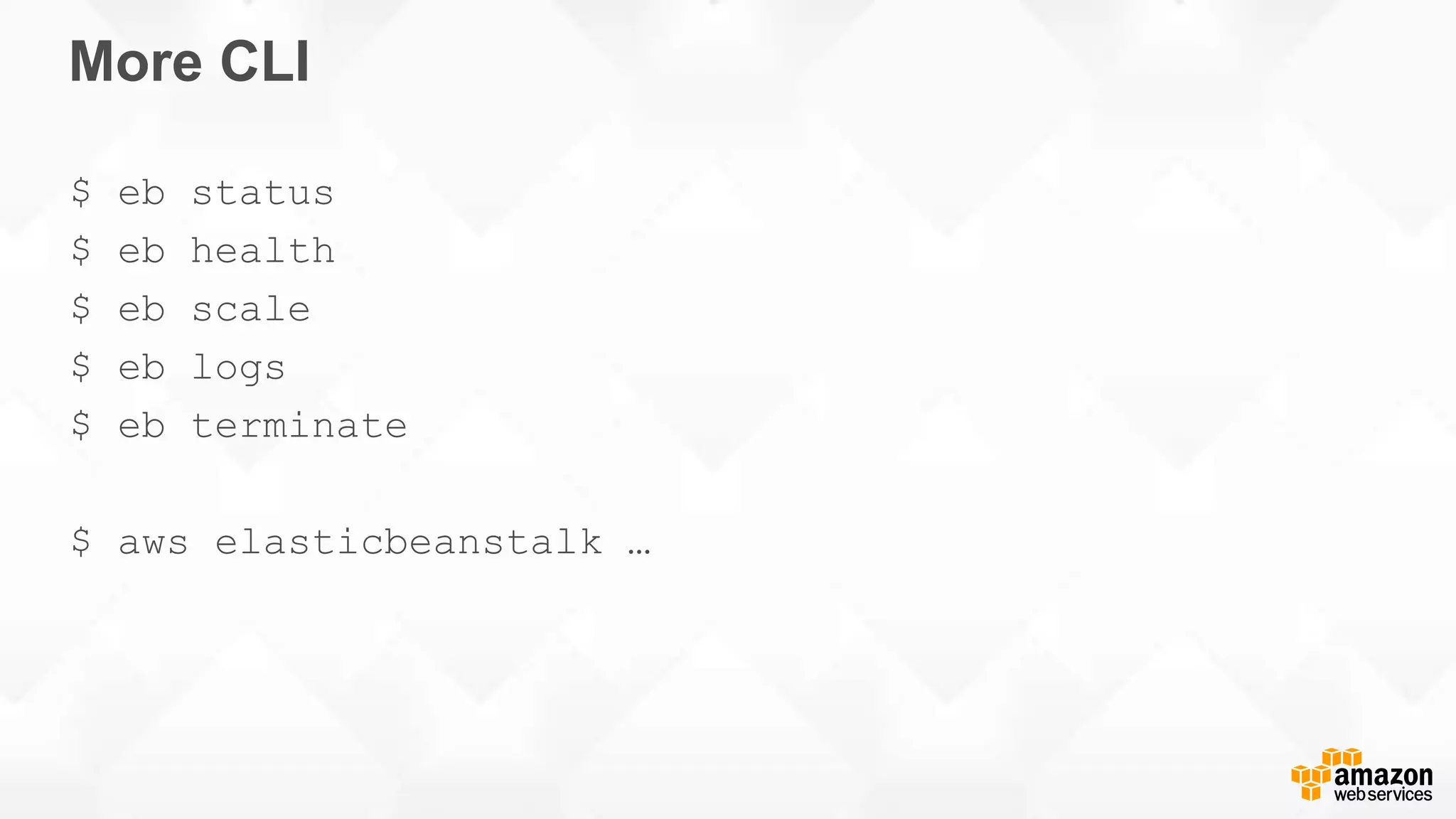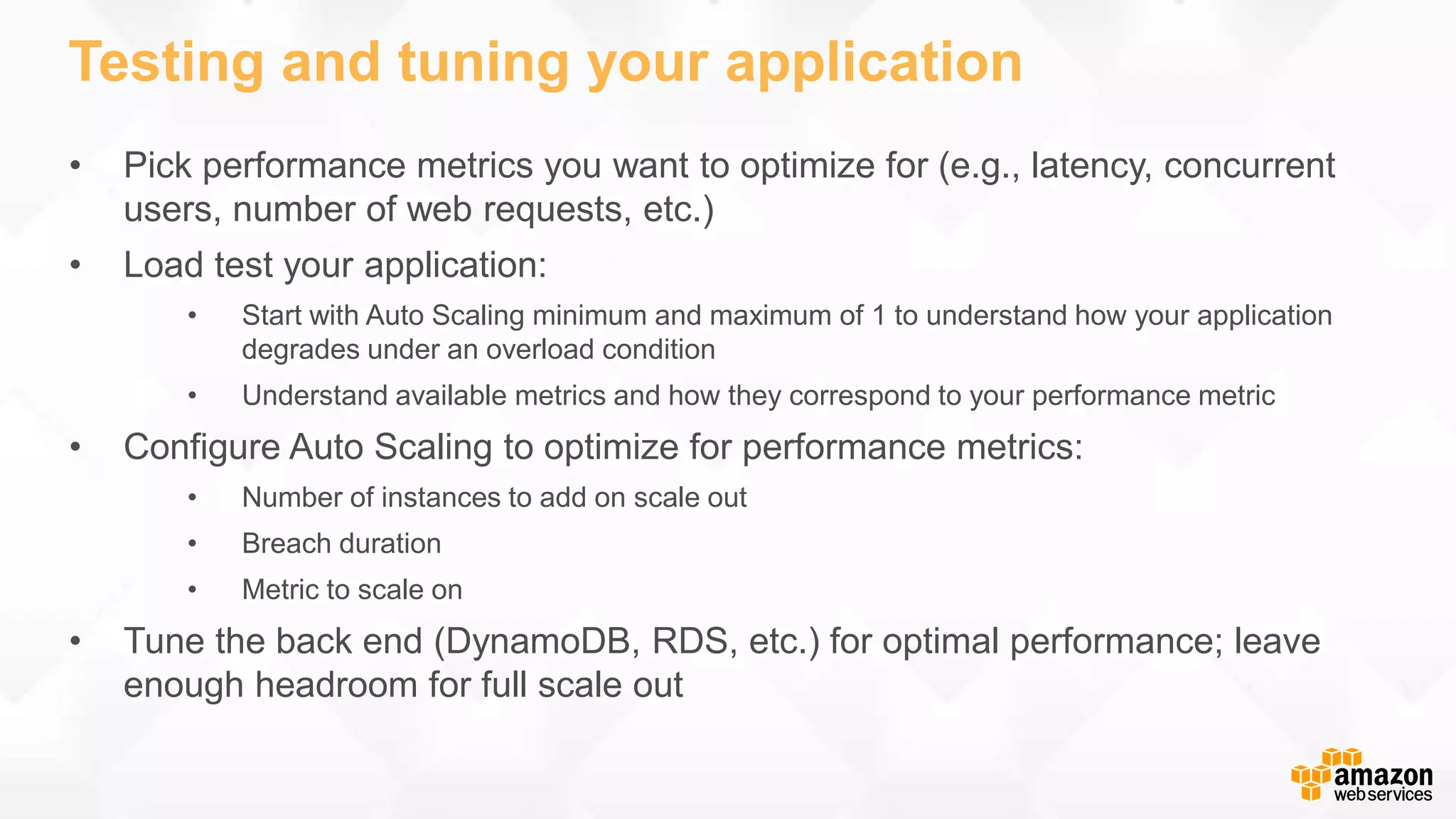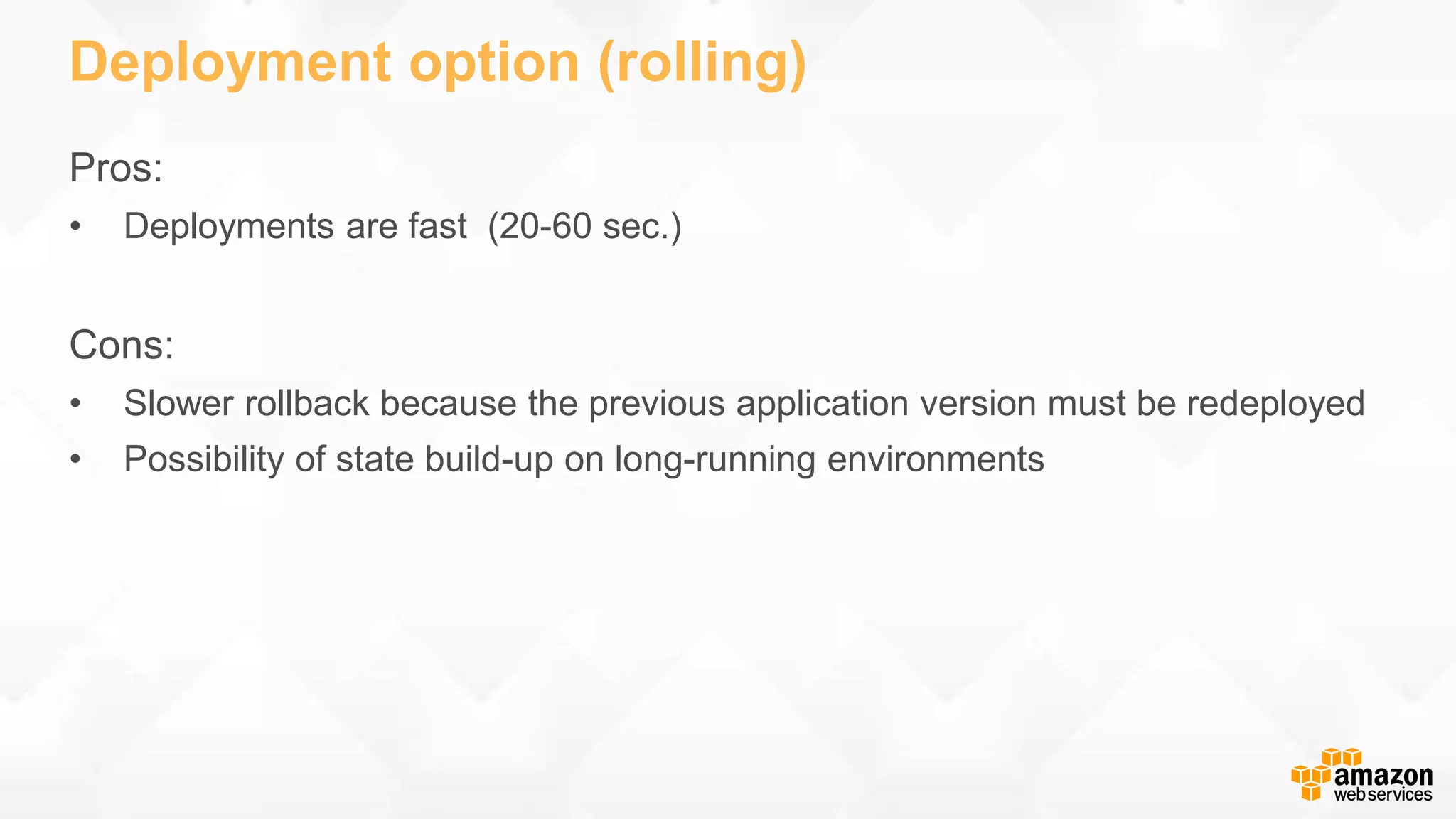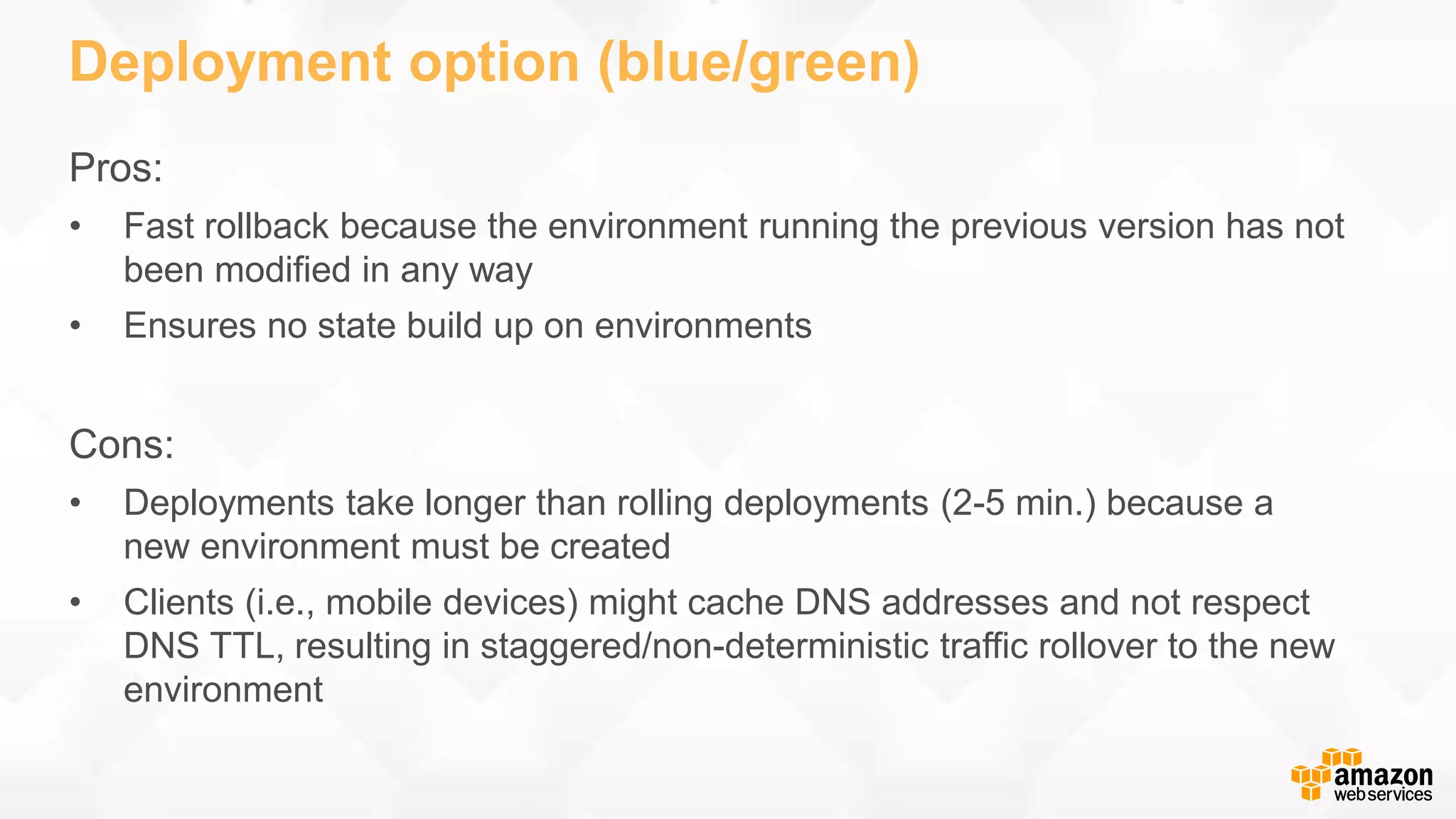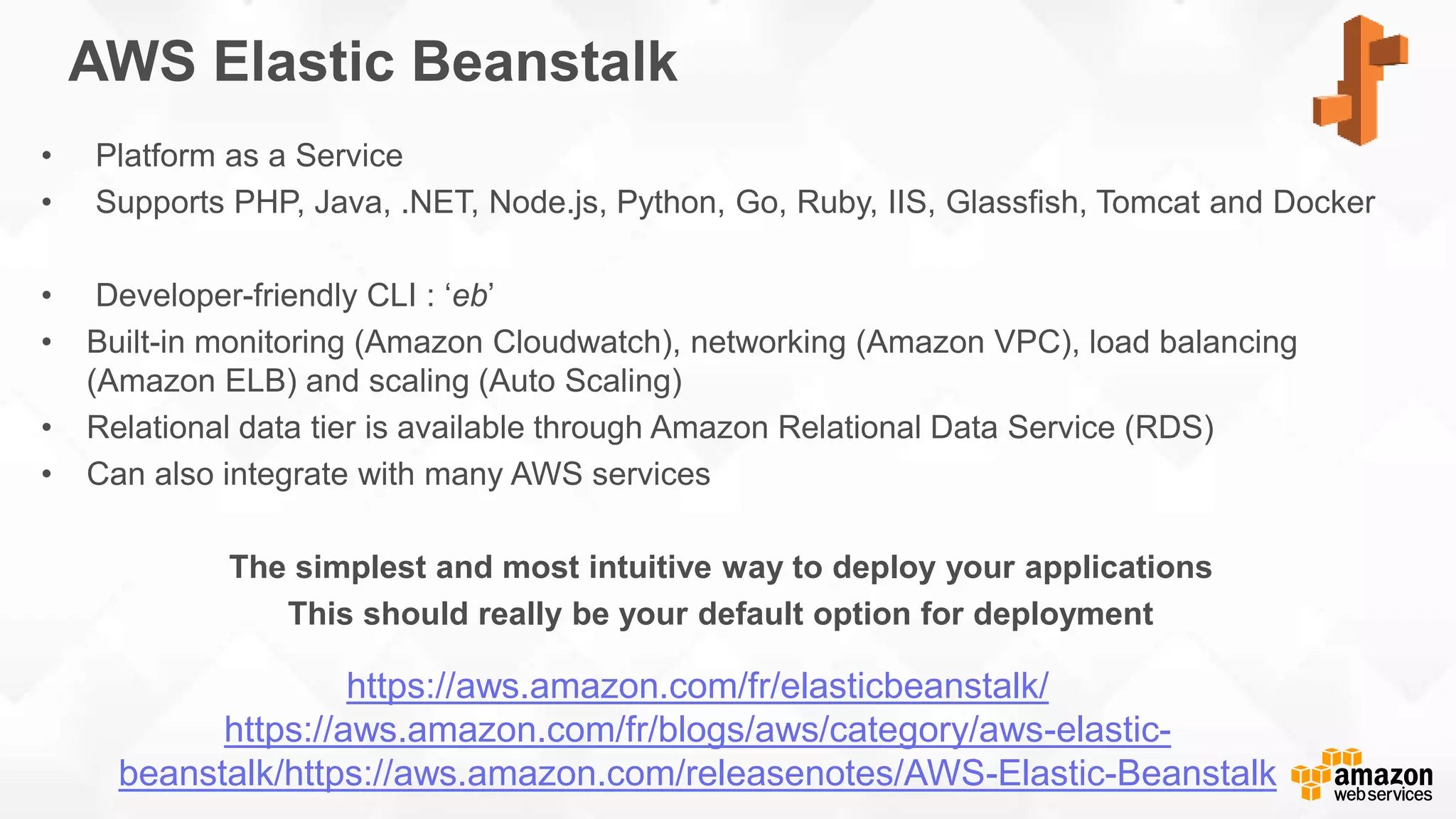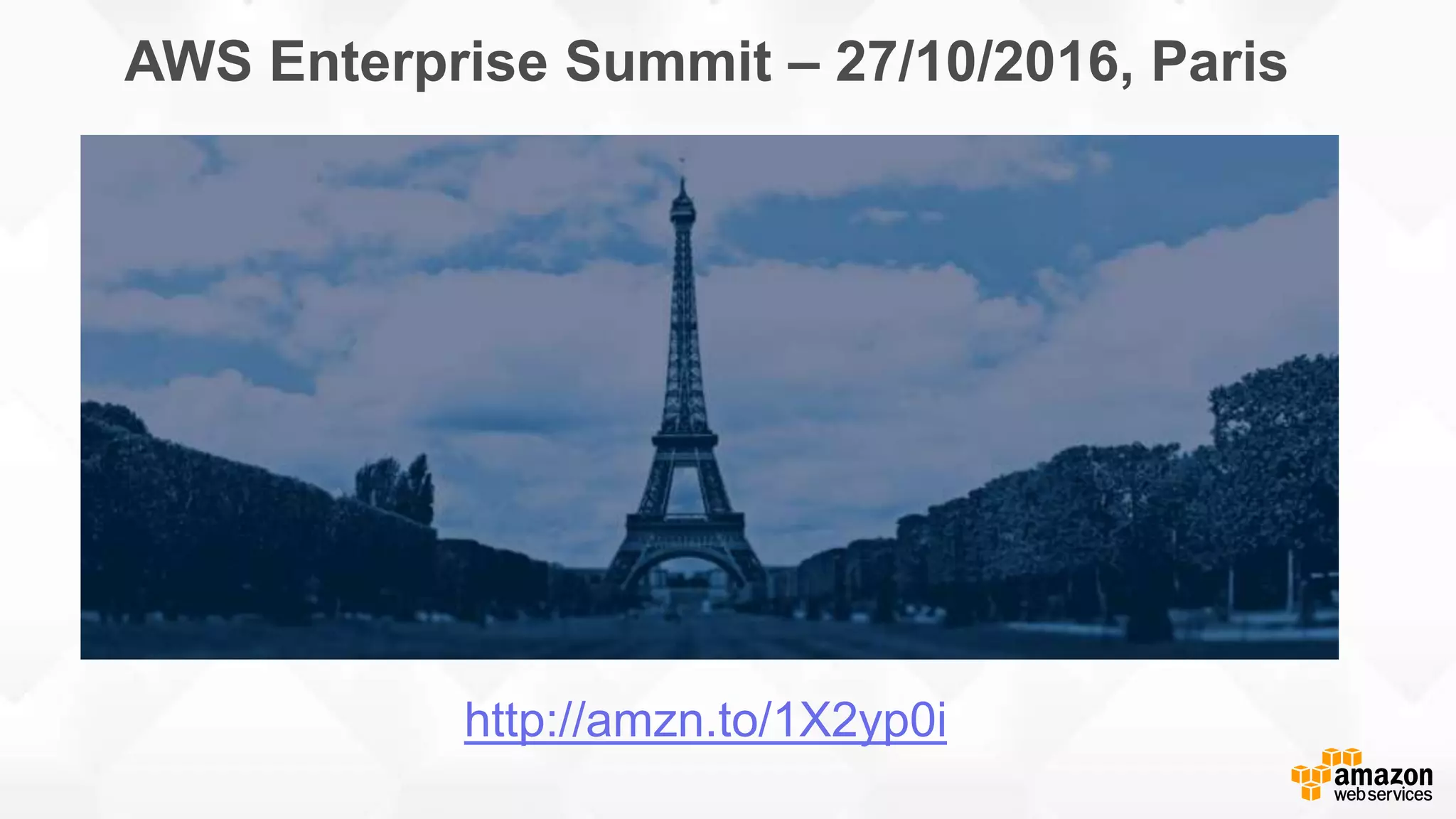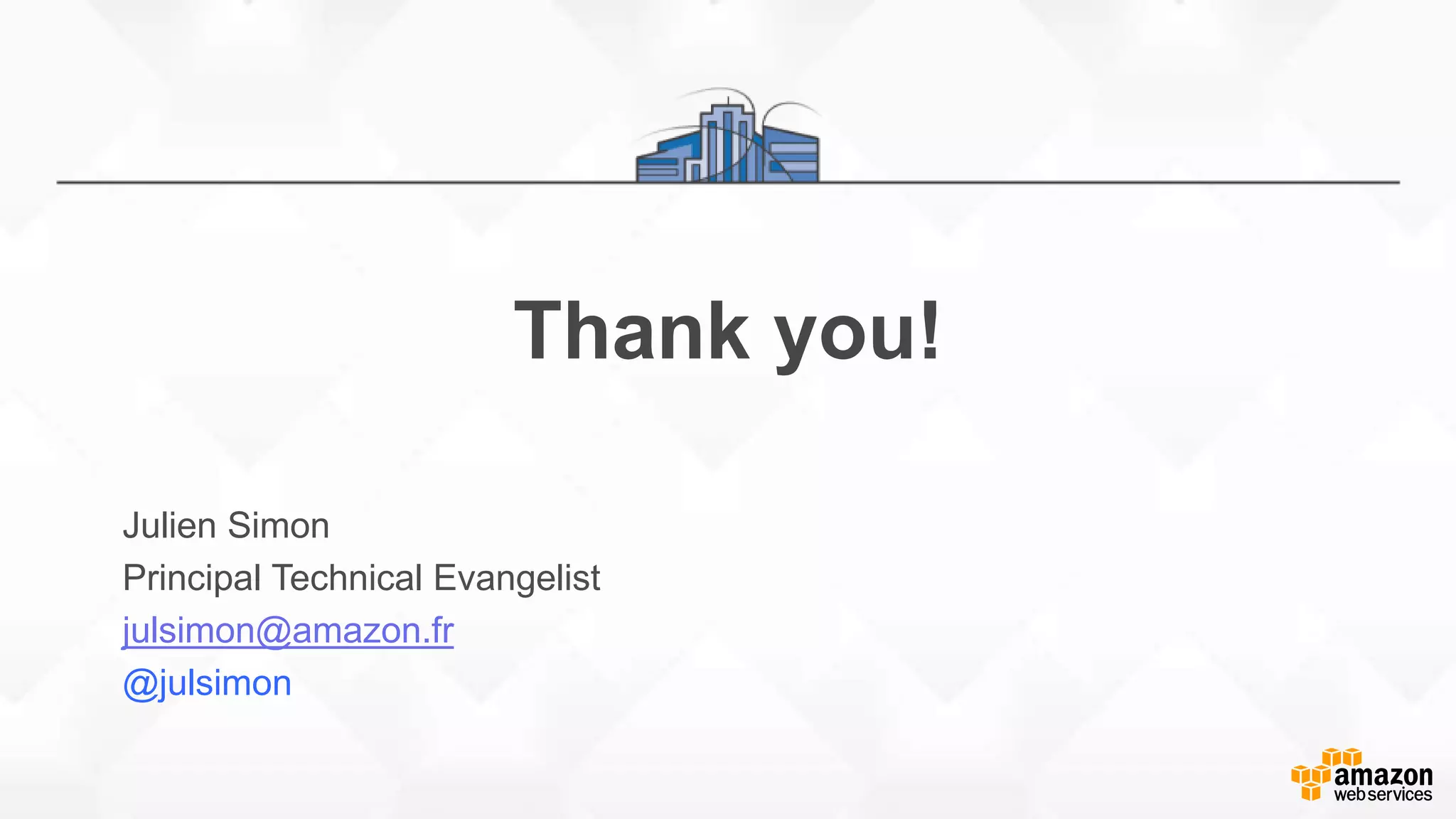This document summarizes AWS Elastic Beanstalk, which is a PaaS that allows developers to deploy and manage applications in the AWS cloud. It supports many programming languages and frameworks out of the box. Elastic Beanstalk handles the infrastructure management including provisioning servers, load balancing, auto-scaling and monitoring. Developers can focus on their code without worrying about managing the underlying infrastructure. The document provides an example of deploying a Ruby on Rails application to Elastic Beanstalk and accessing other AWS services.
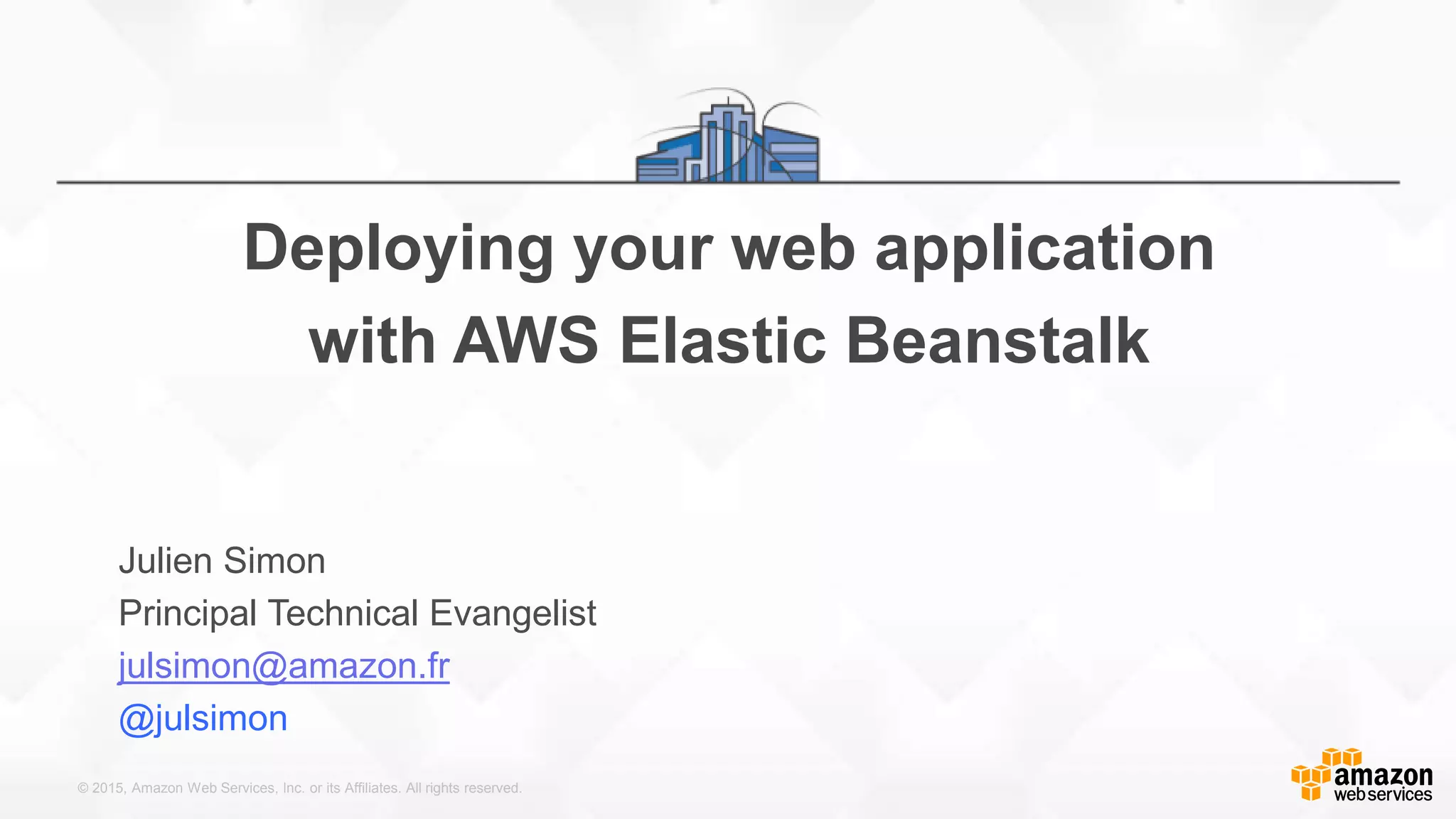

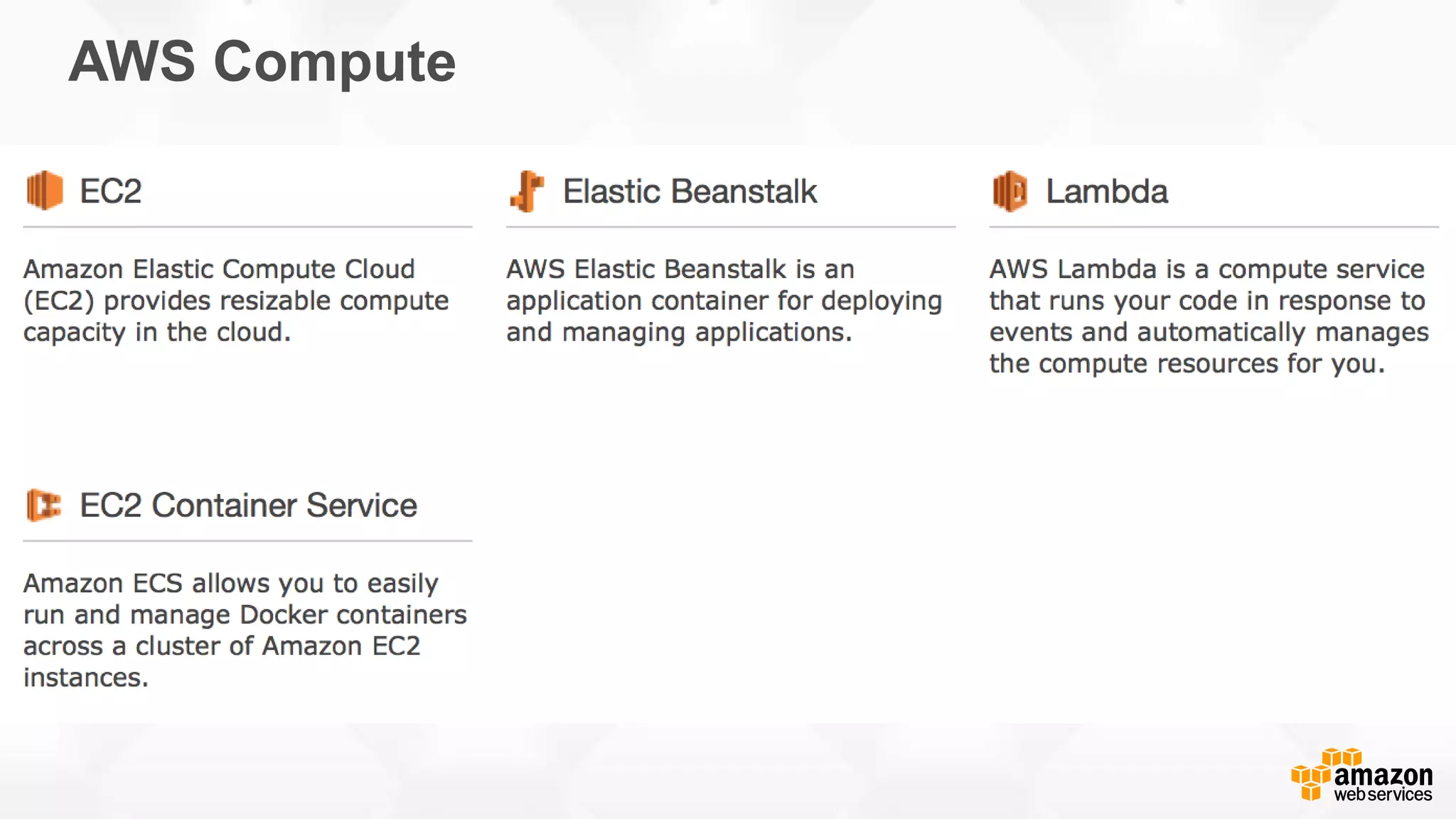
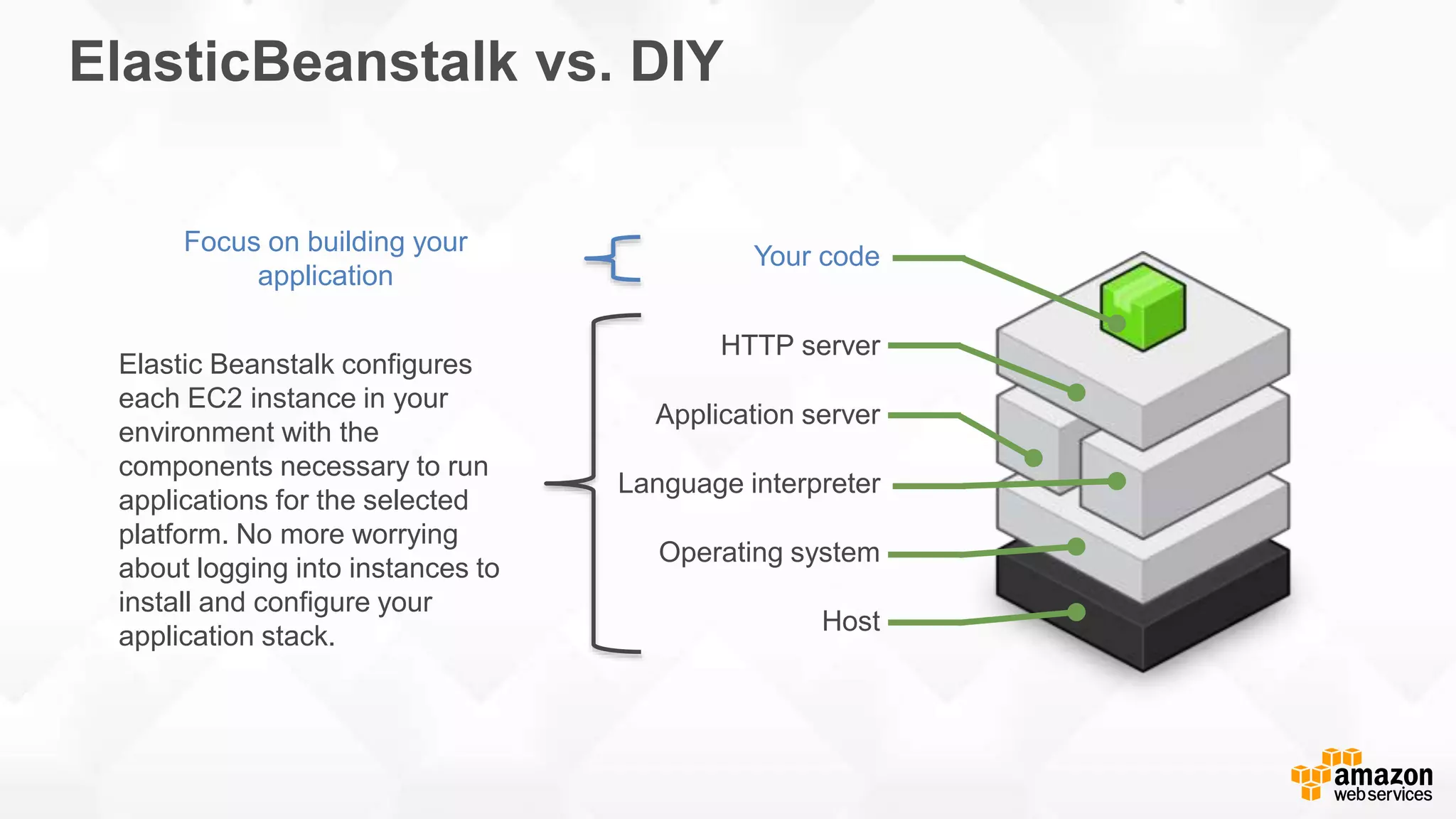
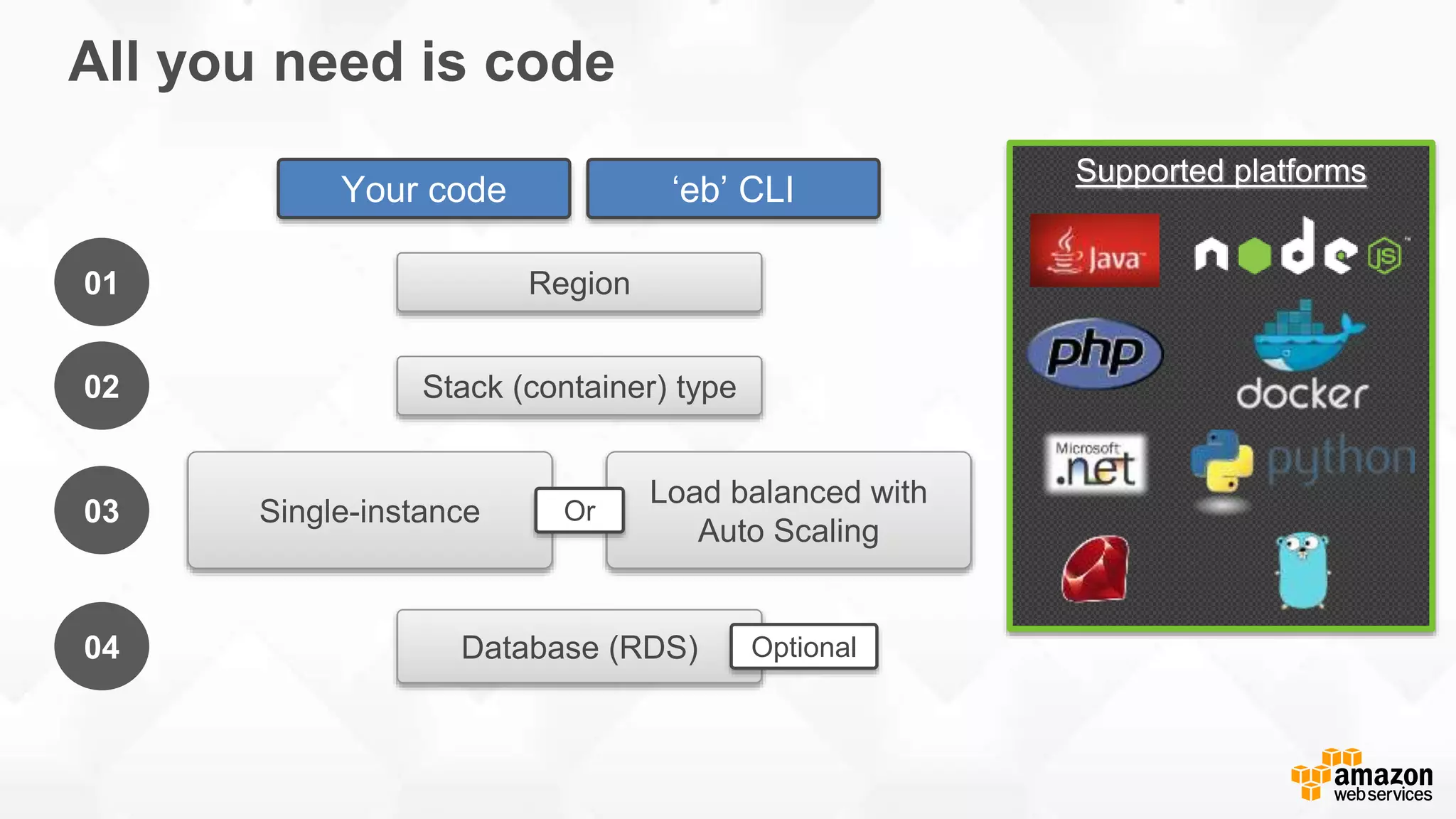
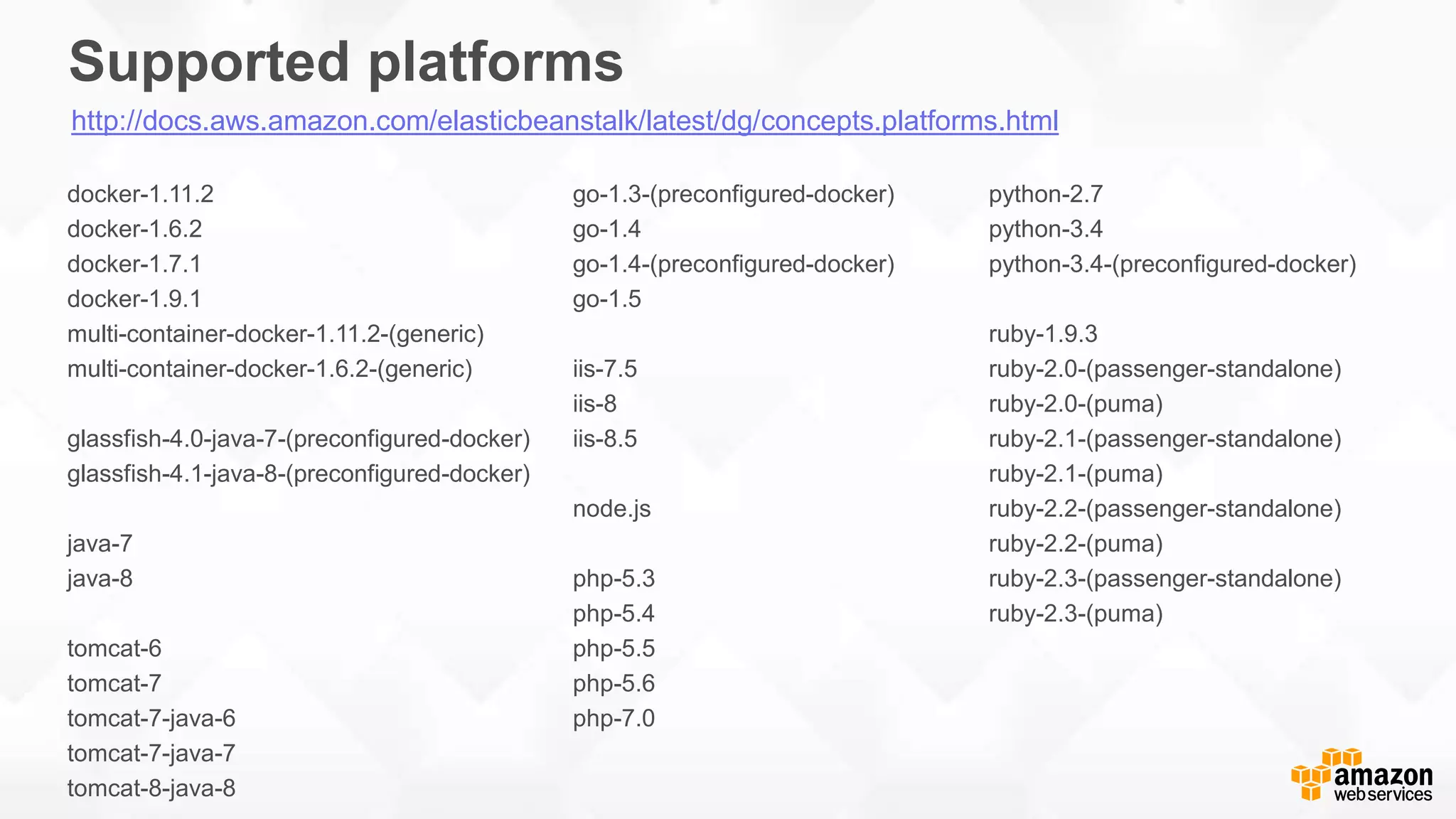
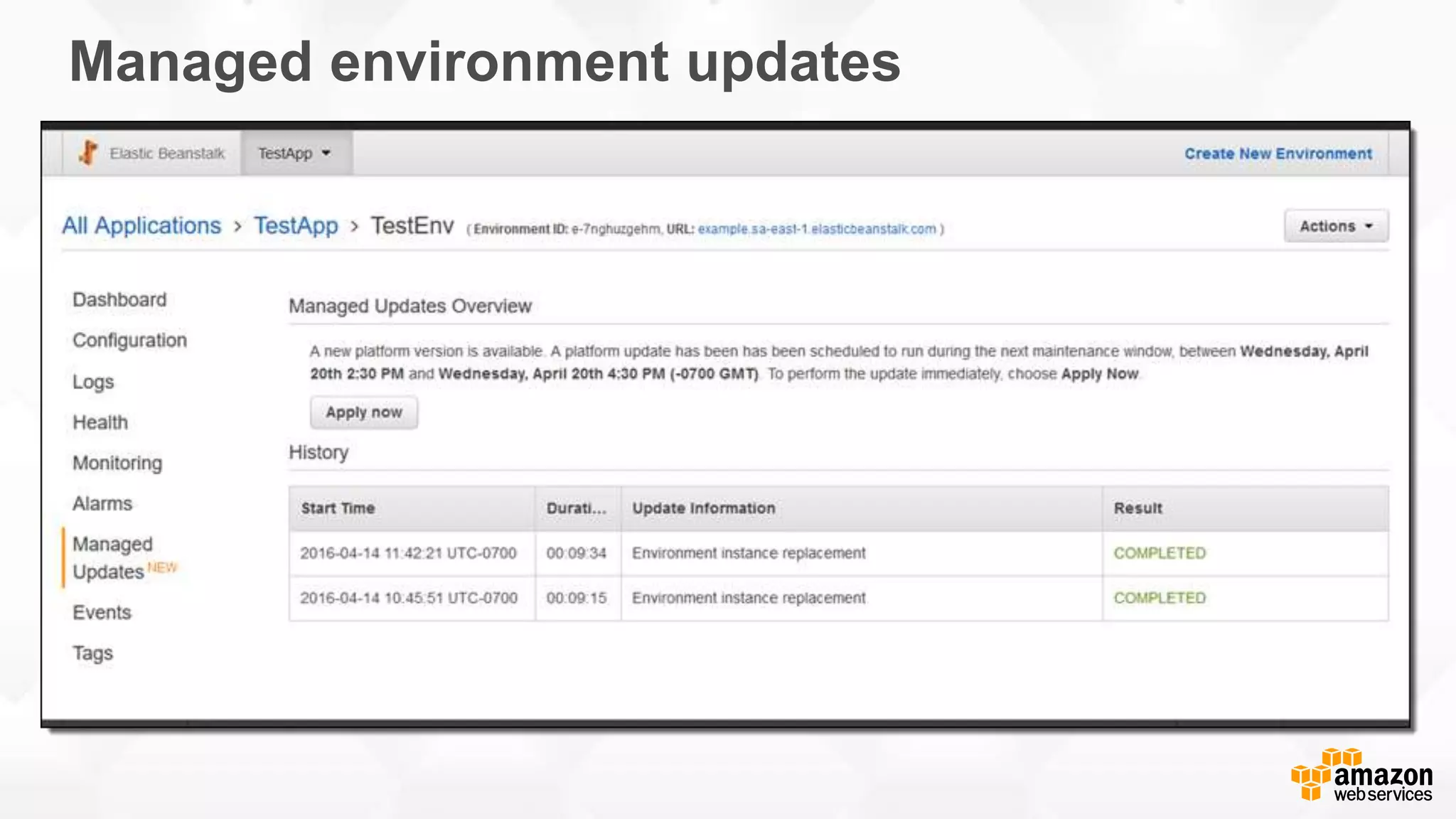
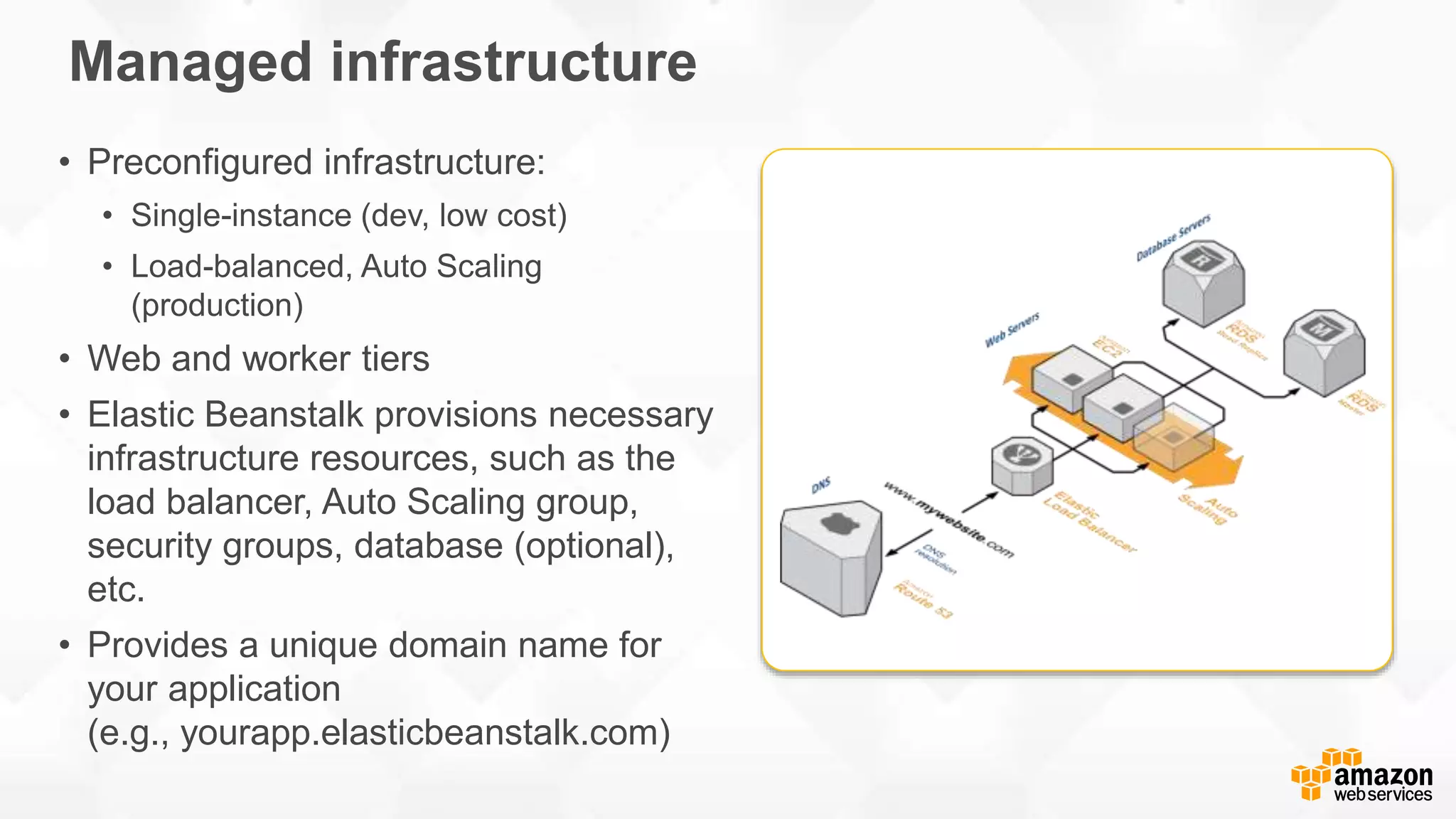
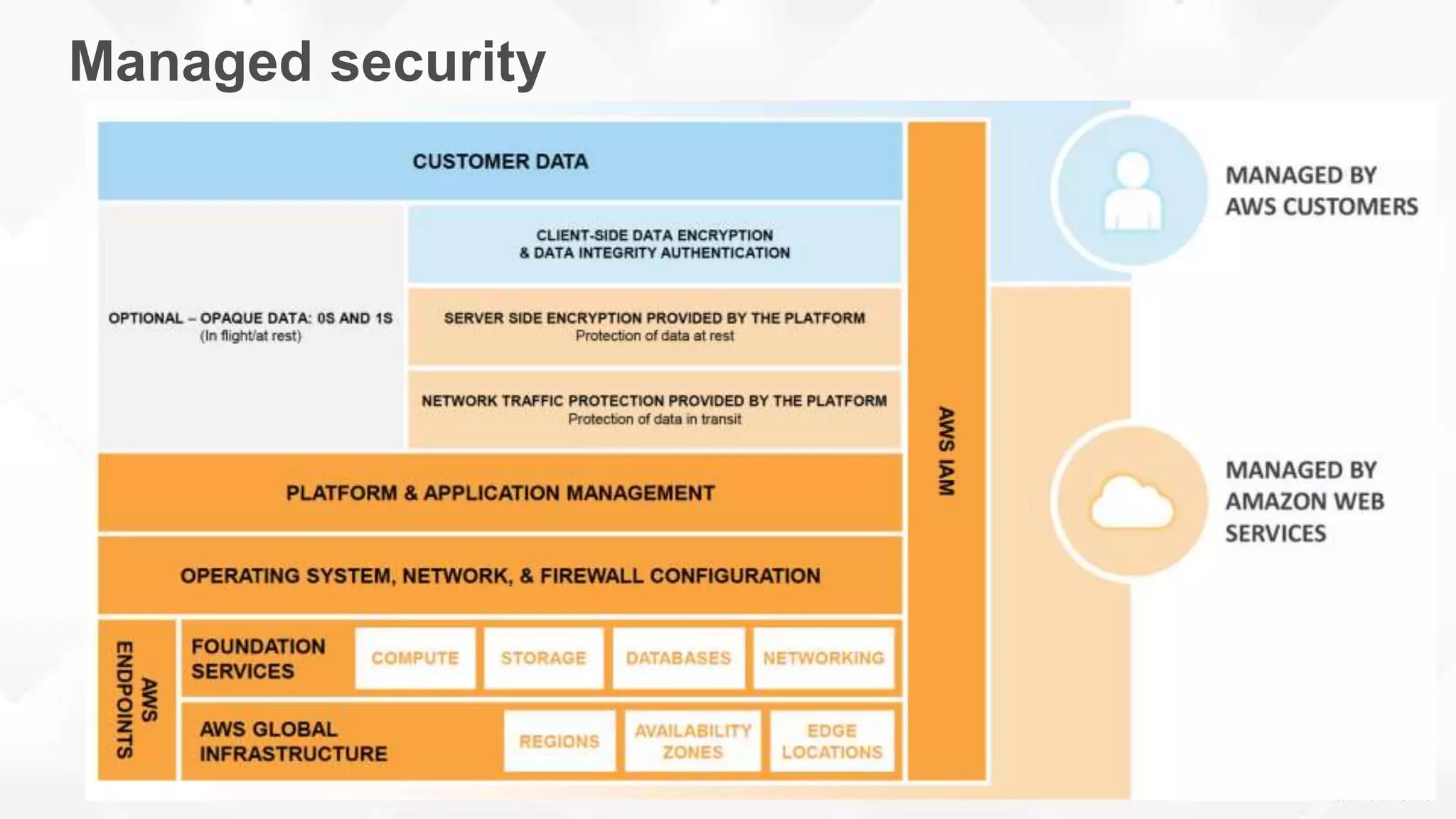

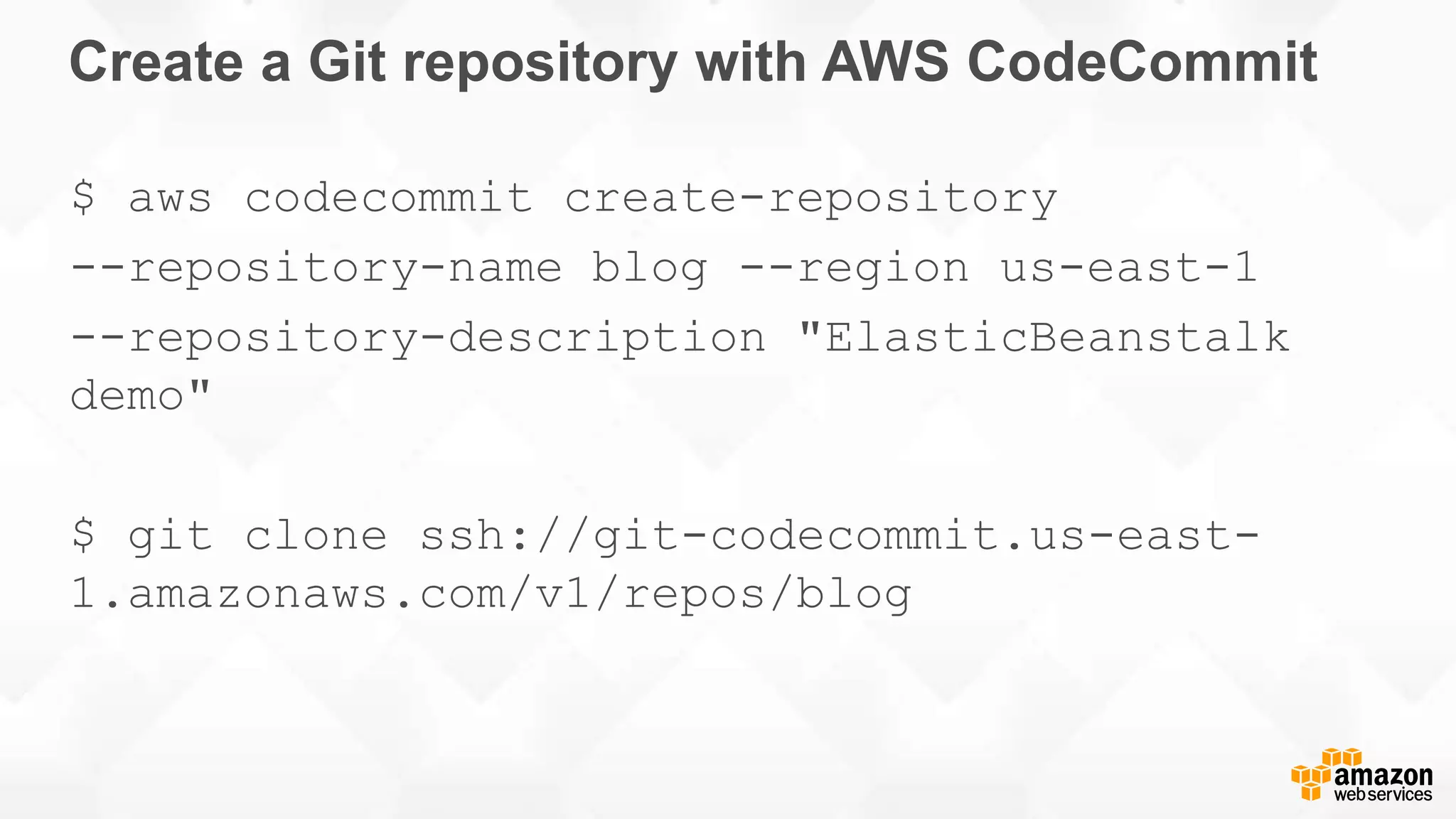
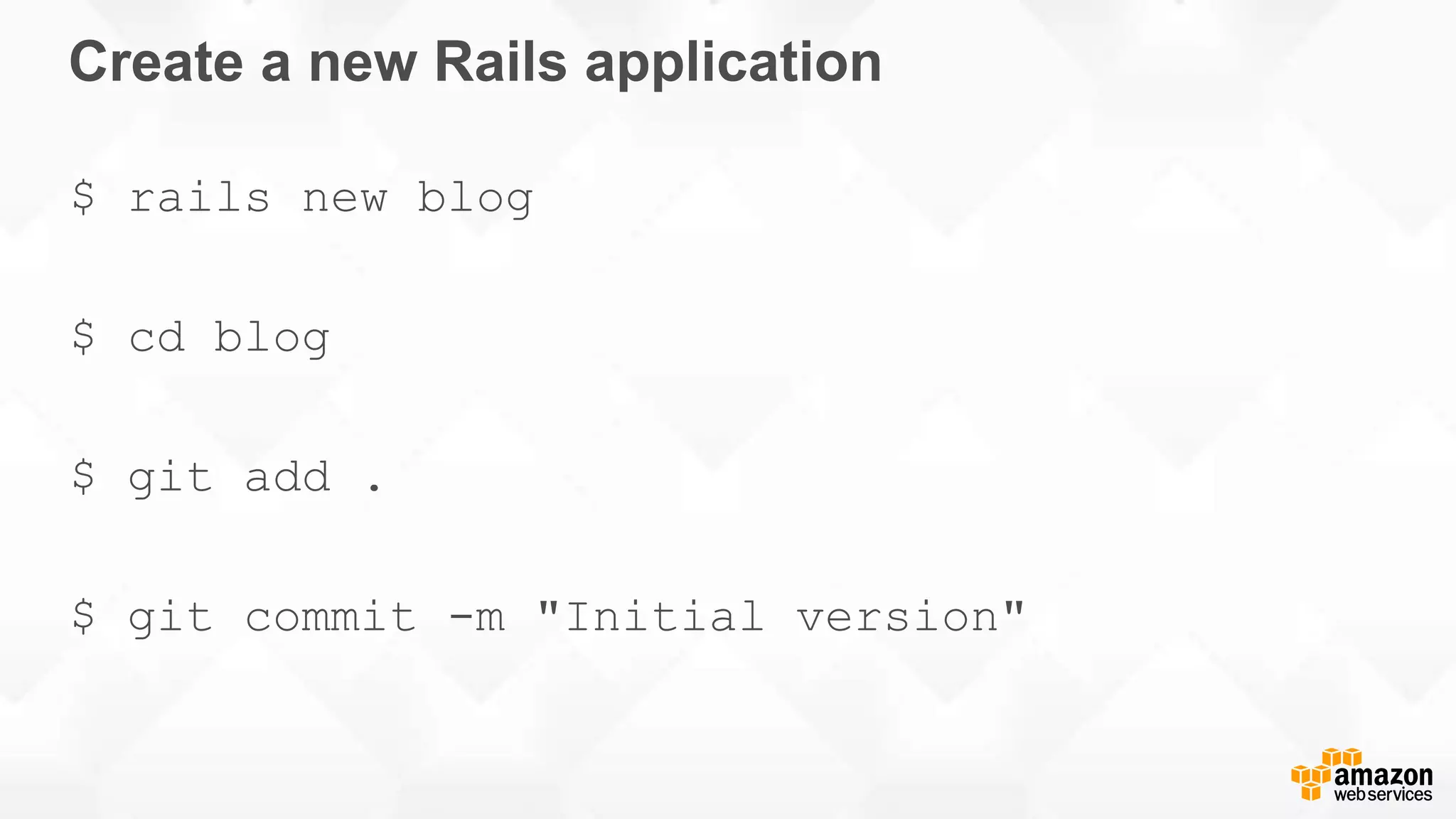
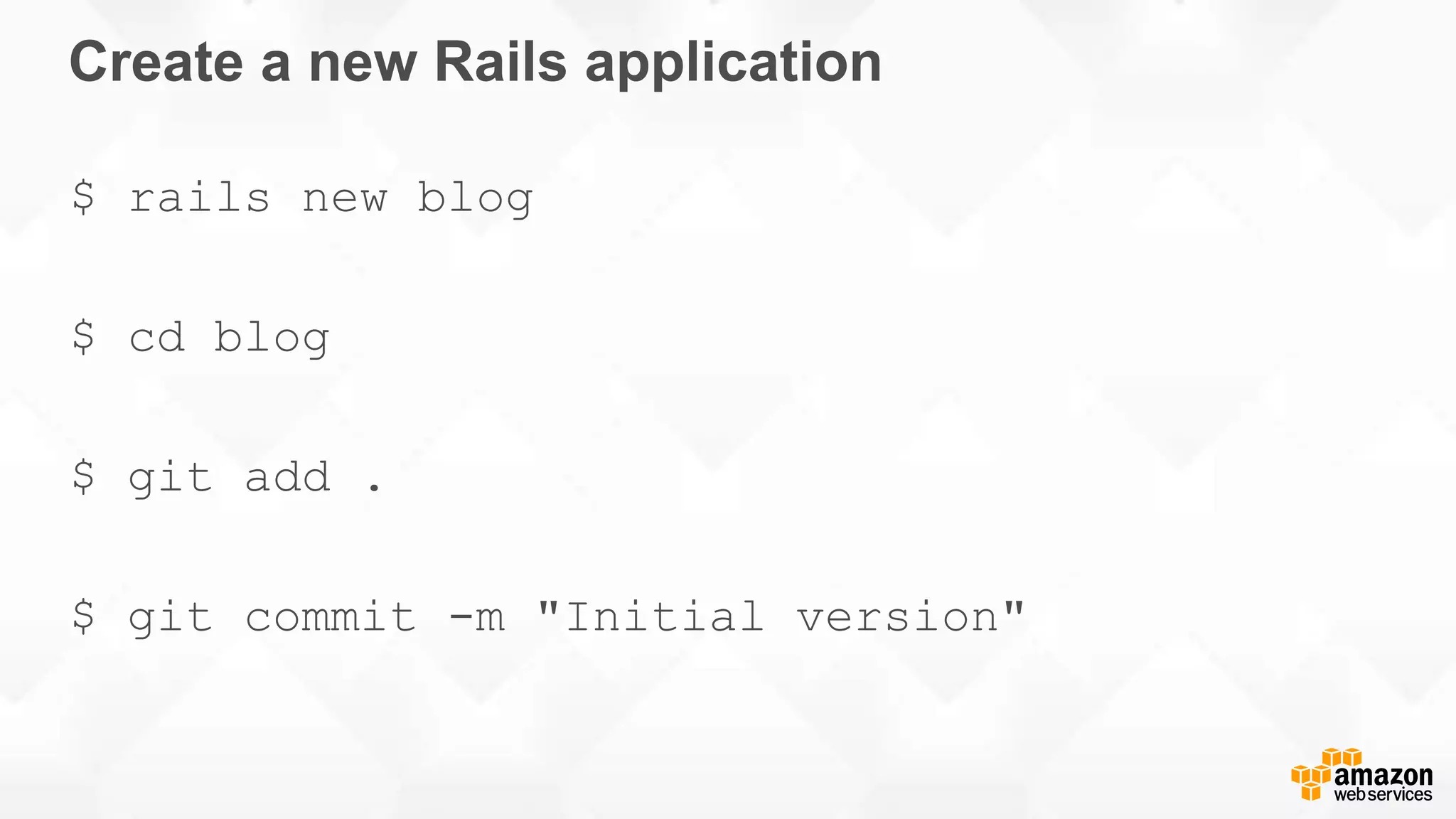
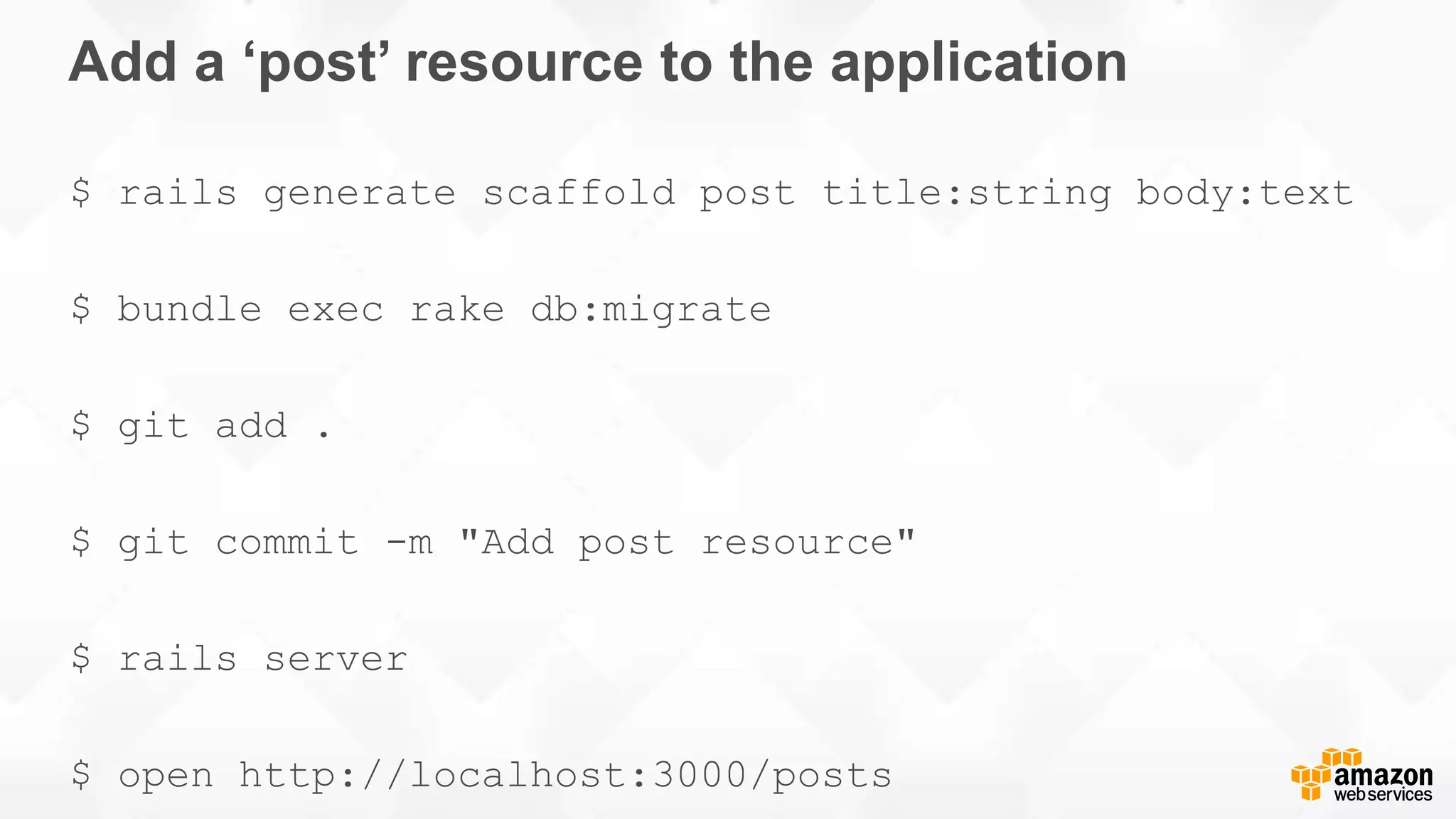
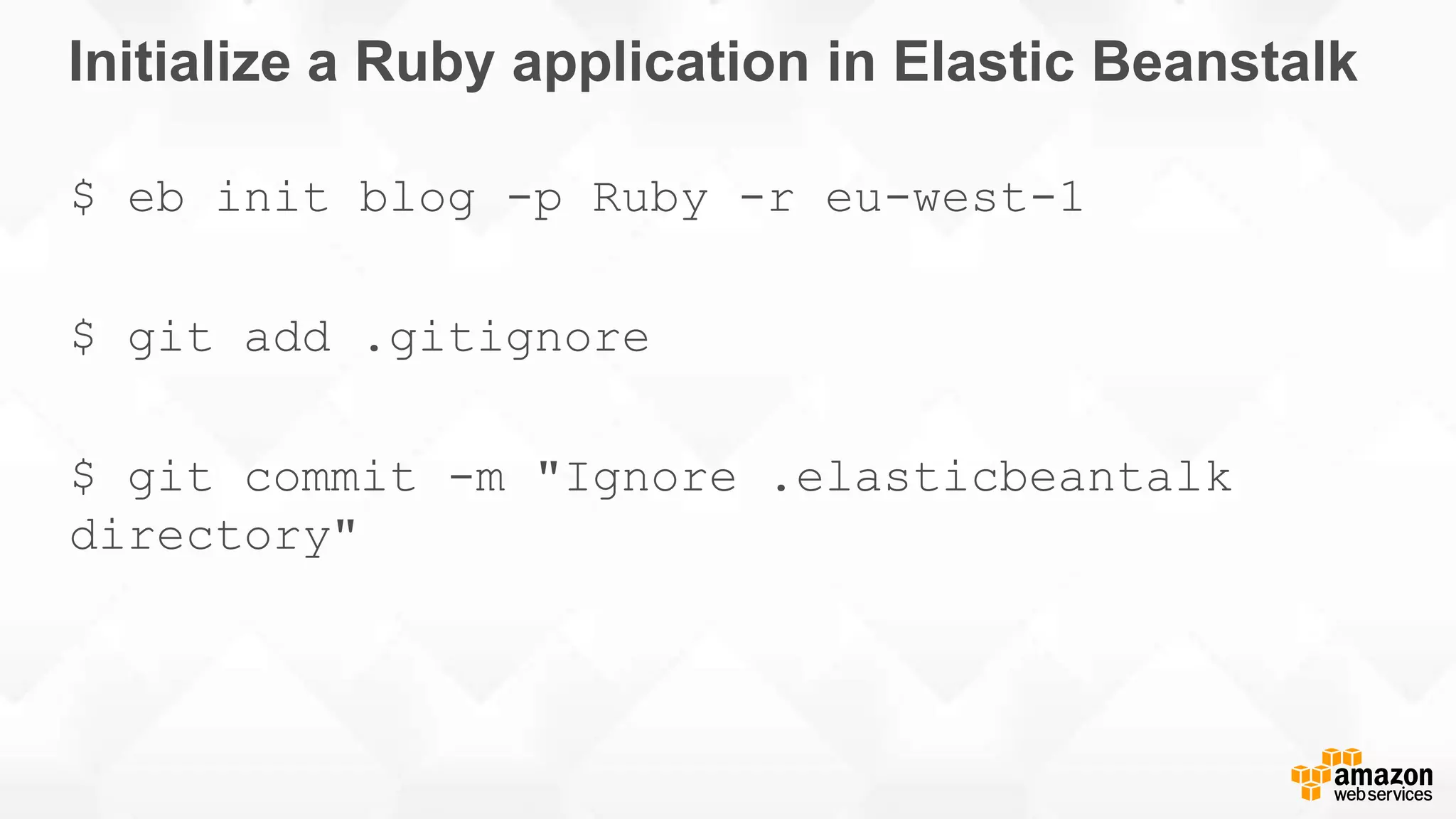
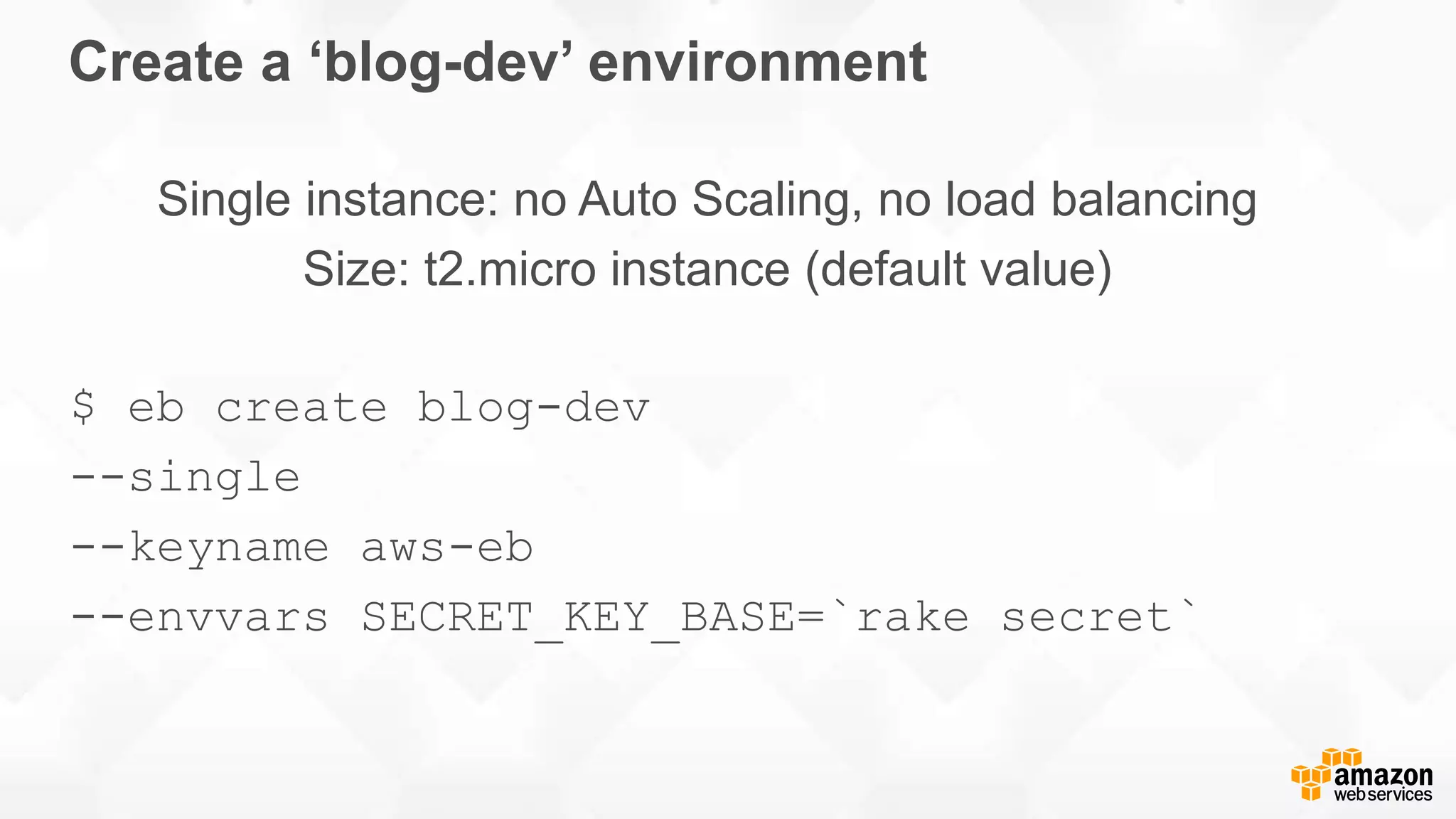
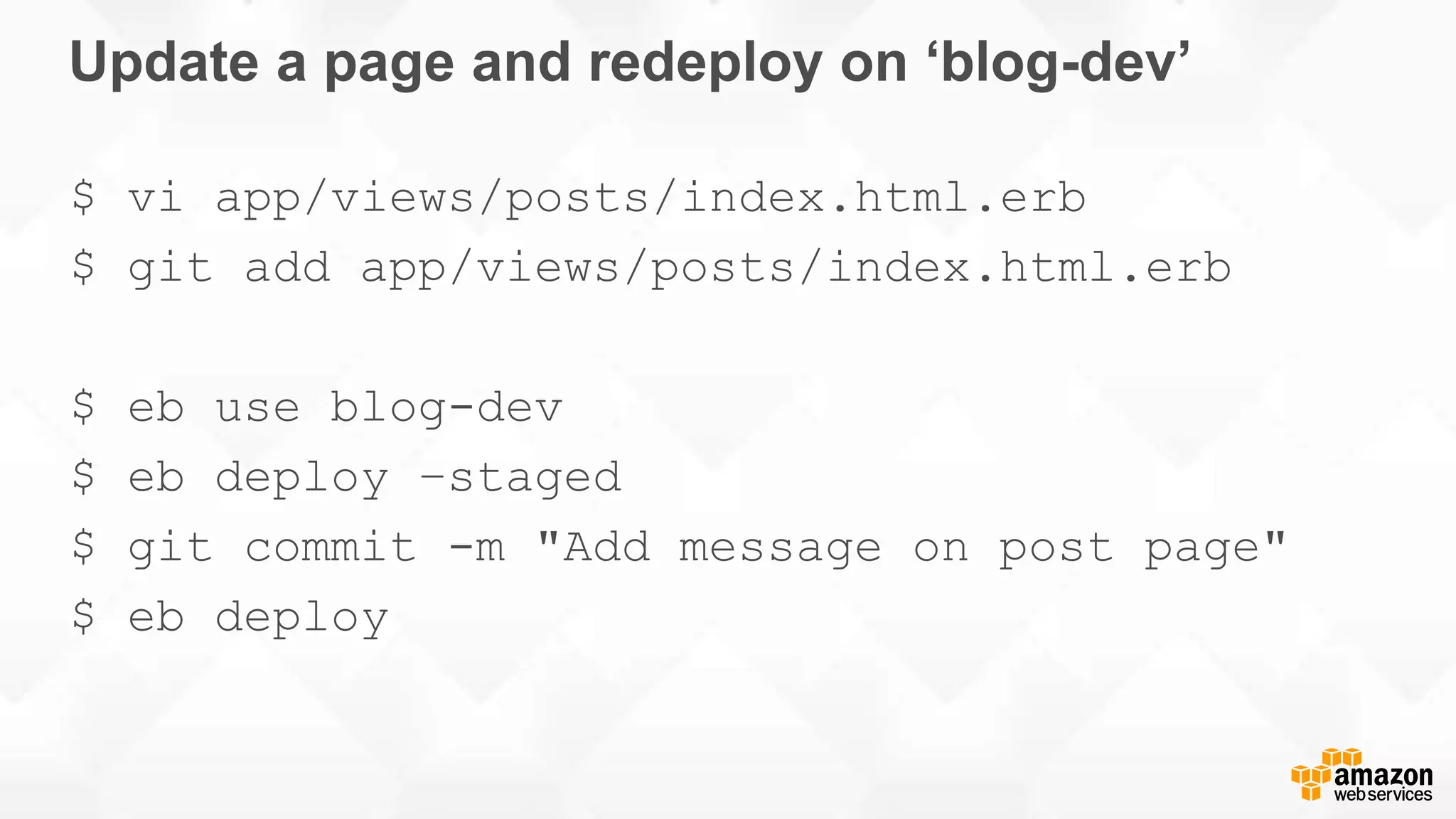
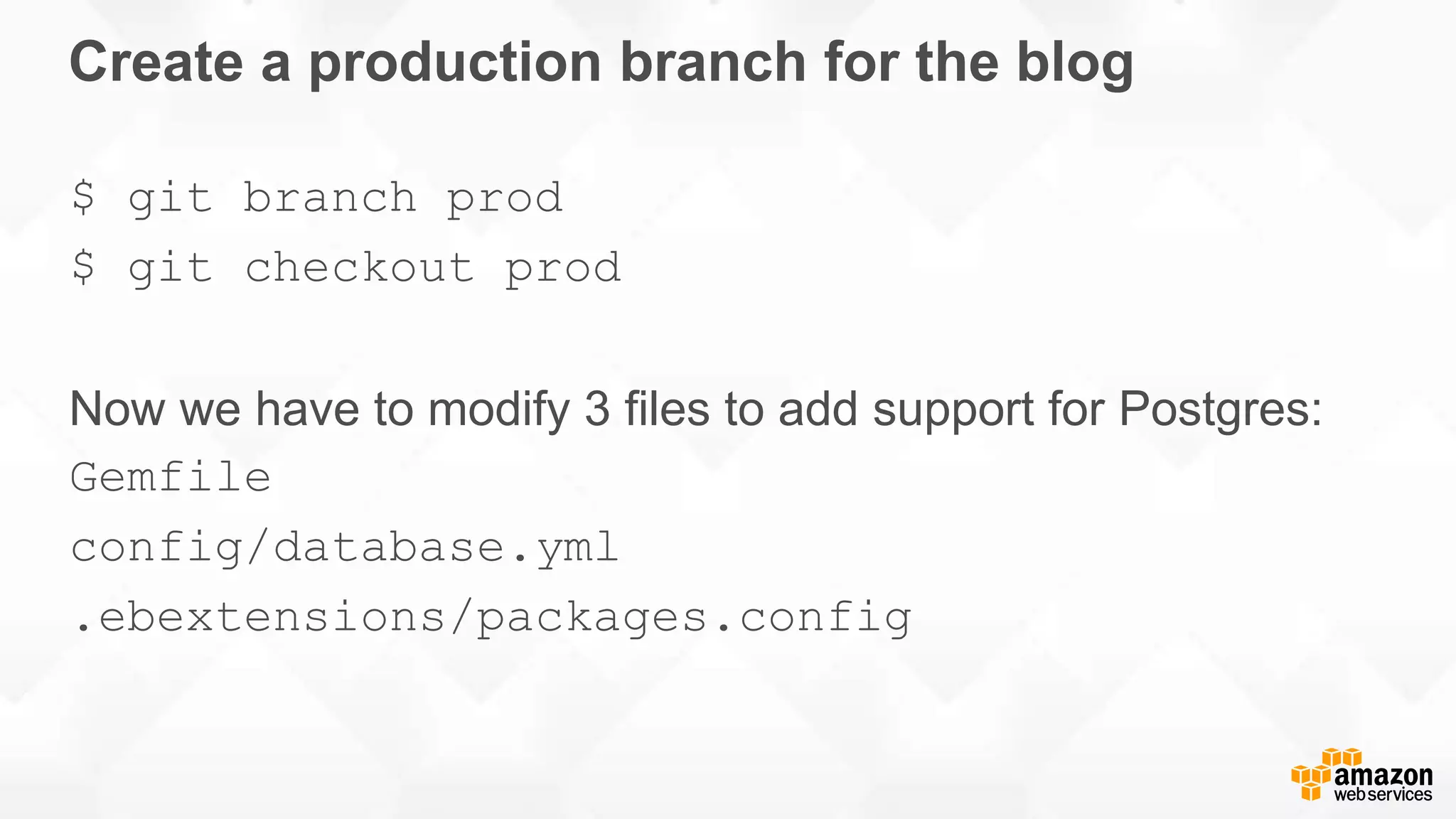
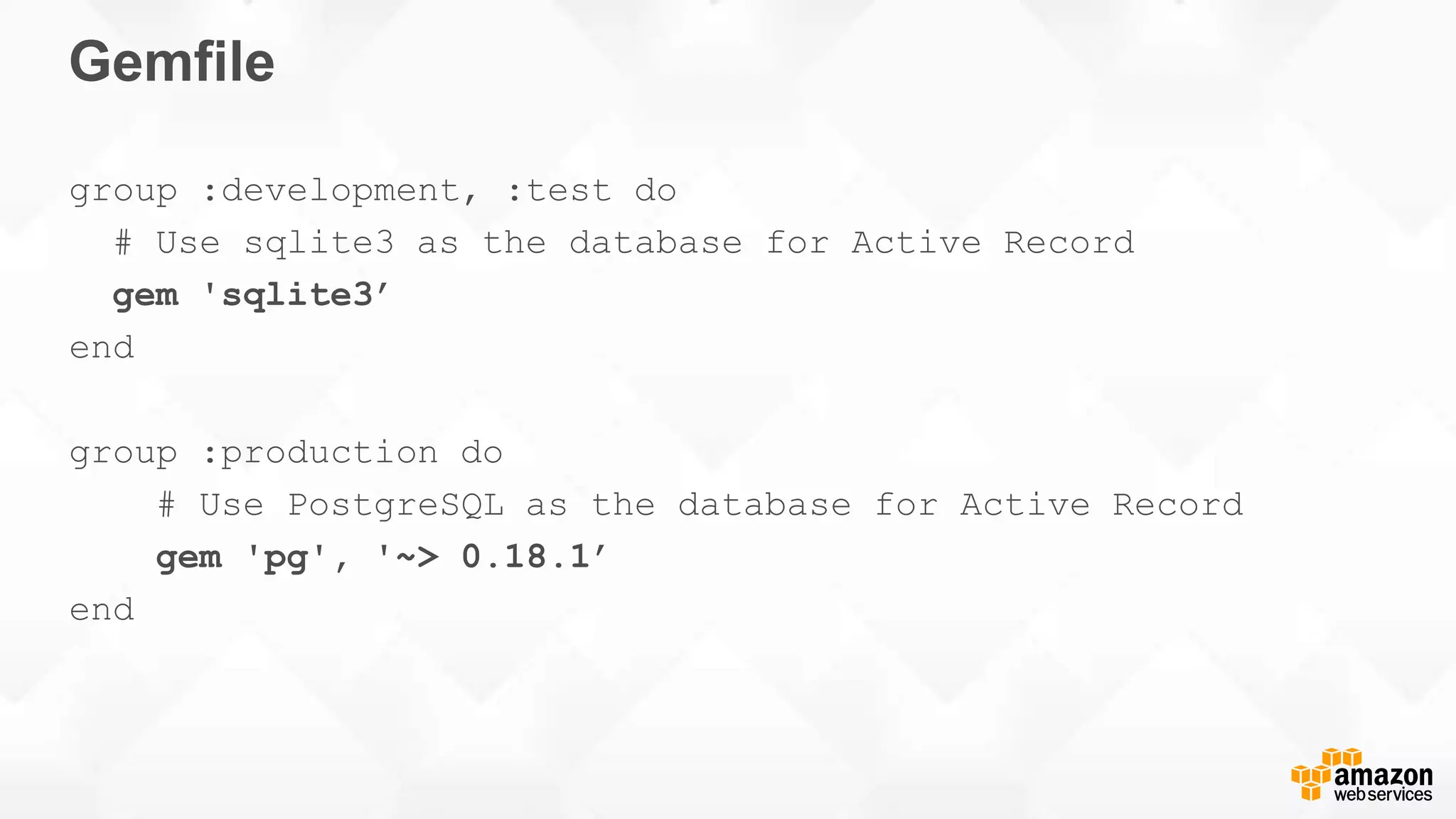
![config/database.yml production: <<: *default adapter: postgresql encoding: unicode database: <%= ENV['RDS_DB_NAME'] %> username: <%= ENV['RDS_USERNAME'] %> password: <%= ENV['RDS_PASSWORD'] %> host: <%= ENV['RDS_HOSTNAME'] %> port: <%= ENV['RDS_PORT'] %> These environment variables will be automatically declared by Elastic Beanstalk when we create an RDS instance](https://image.slidesharecdn.com/20160928thefamily-160929142031/75/Deploying-your-web-application-with-AWS-ElasticBeanstalk-20-2048.jpg)
![.ebextensions/packages.config packages: yum: postgresql94-devel: [] This directive will install the postgres94-devel package on your instances. It is required to install the ‘pg’ Ruby gem. .ebextensions provides lots of options to configure and customize your Elastic Beansltalk applications. The documentation is your friend https://docs.aws.amazon.com/fr_fr/elasticbeanstalk/latest/dg/ebextensions.html](https://image.slidesharecdn.com/20160928thefamily-160929142031/75/Deploying-your-web-application-with-AWS-ElasticBeanstalk-21-2048.jpg)
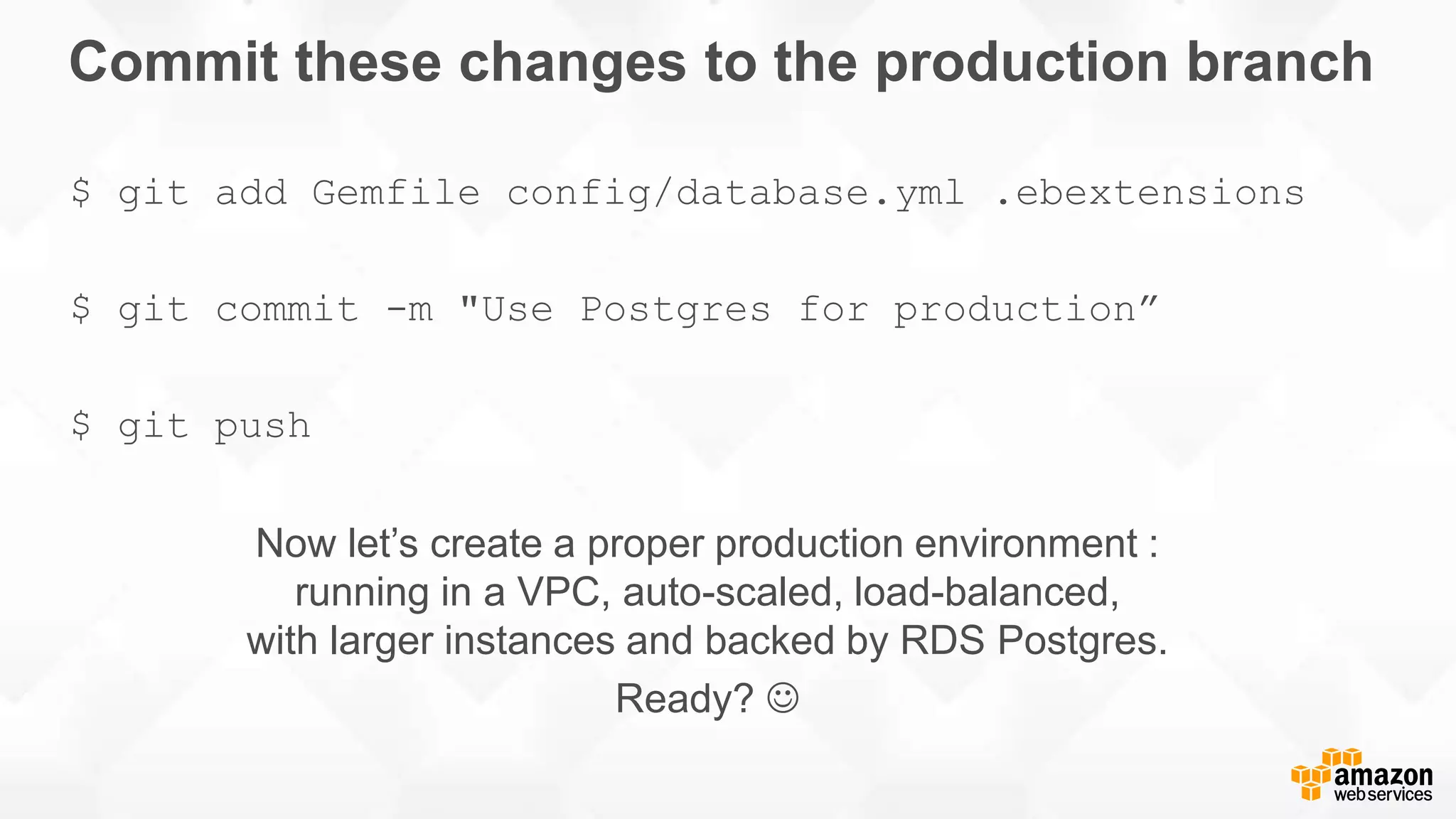
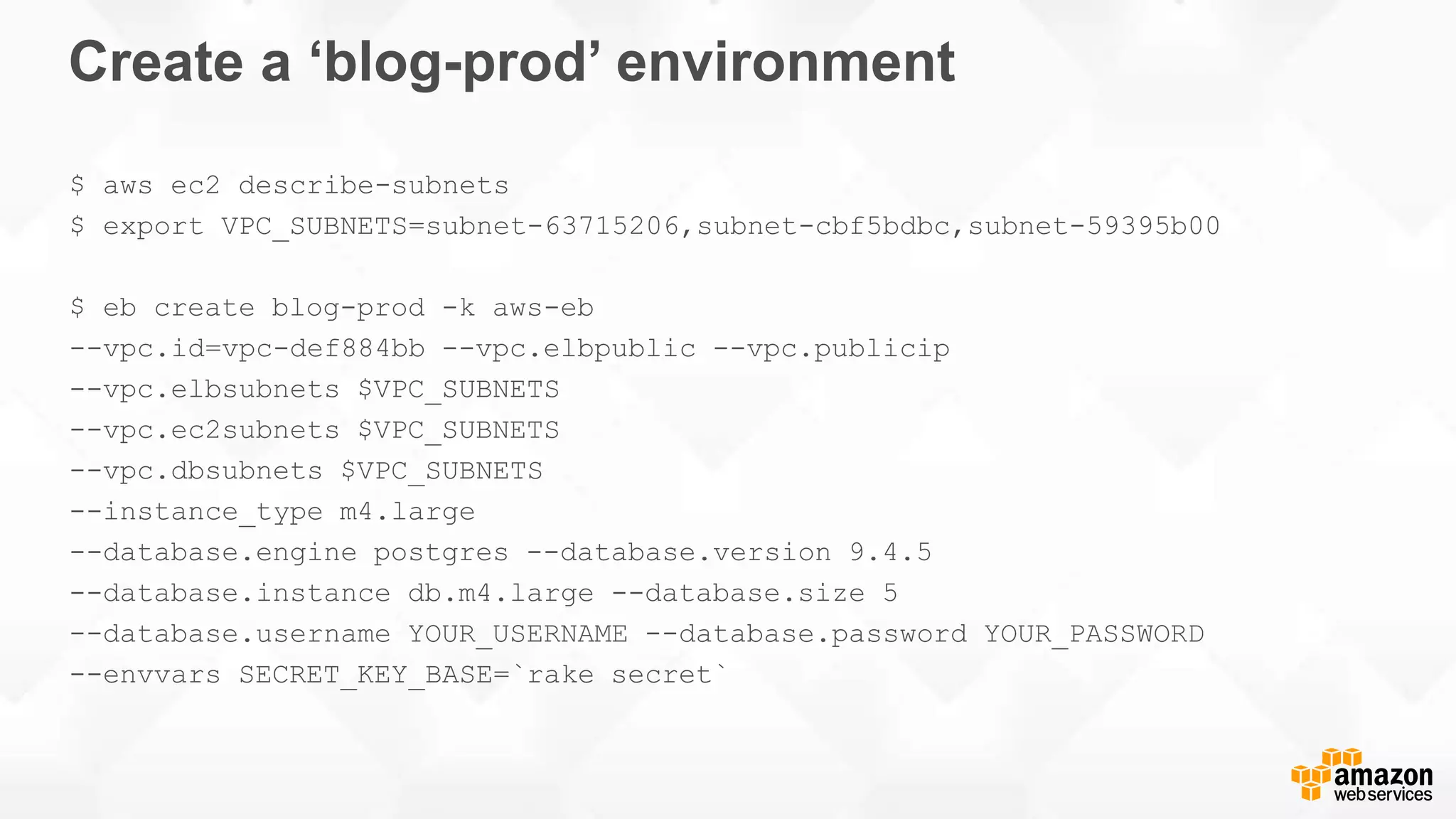
![Accessing other AWS services // Login to one of our app servers $ eb ssh // Connect to our RDS instance [ec2-user] psql -h RDS_ENDPOINT -p 5432 -U user -d ebdb ebdb=> dt ebdb=> select * from posts // Connect to our ElastiCache cluster [ec2-user] echo "stats" | nc ELASTICACHE_ENDPOINT 11211 [ec2-user] printf "set mykey 0 60 4 rndatarn" | nc ELASTICACHE_ENDPOINT 11211 [ec2-user] echo "get mykey" | nc ELASTICACHE_ENDPOINT 11211](https://image.slidesharecdn.com/20160928thefamily-160929142031/75/Deploying-your-web-application-with-AWS-ElasticBeanstalk-24-2048.jpg)
